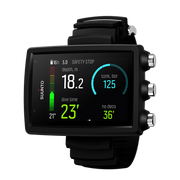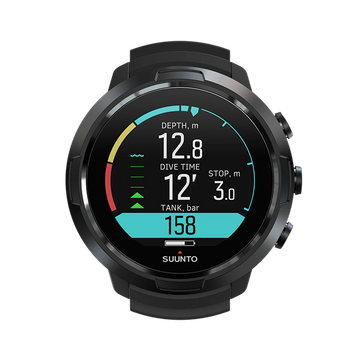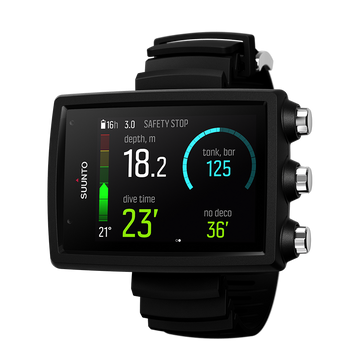

Suunto-blogg
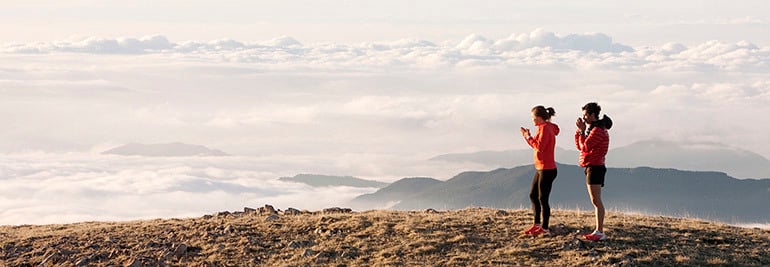
How to enjoy the outdoors with your partner: a chat with Emelie and Kilian
Who would have thought: a relationship interview with Kilian? Strange things happen on Valentine’s Day! But don’t worry, both Emelie and Kilian were ready to chat about the topic without hesitation. We caught up with them in Andorra, after the first ski mountaineering world cup races of the season where they both finished on the podium.
Emelie and Kilian, do you train a lot with each other?
Kilian: Maybe once a week we do a full training session together. The other days we often start and end at the same place and make loops.
Emelie: Yes, we often start together but he will do more. Sometimes, if I want to do intervals, I ask him to go before, so he can make the tracks. But I often catch him so the intervals often aren’t super good. If he goes with me, he goes easy.
Kilian: And if there’s a nice, more technical summit, we do it together and take a nice tour out.
How has training together changed during the five years you have been together?
K: I don’t think it has changed that much. We know each other a bit better now. We feel more comfortable if we see the other one wants to go faster or slower and we don’t always need to talk or say things.
And when we go to more technical places, we know how the other is doing and reacting. I think that is mostly what has changed.
E: Maybe now I ask you to do more intervals with me? Kilian can help me do well in the intervals.
"Kilian can help me do well in the intervals."
Are skiing and running together different?
K: Skiing is always a bit more tricky.
E: When you go running you don’t need to worry about avalanches.
K: If we go to a summit with some climbing or some steep slopes with Emelie, my brain is working much more. It is not the same feeling when I am with my friends. With her I think more. I mean, when I am with my friends, I take good care, but am less stressed.
E: Not me! I know that you will be fine!
K: It’s not that I don’t care [when being out with friends] but the pressure is not the same!
E: But you don’t need to feel that!
K: I think it is just natural.
What’s the difference in being out with your partner or your friends?
E: When I go out with Kilian he’s always very comfortable. He takes the rope and everything. But when I go out with my friends, it’s often the opposite: I’m the one who is more comfortable.
Talking about confidence, are there some activities you do together where Emelie is the one feeling more comfortable?
K: Yea, one time we were swimming in a lake and I almost died. Then she was definitely more comfortable!
E: We wanted to go to a mountain, but there was no trail, so we decided to swim.
K: And it was a big, big lake. I don’t know how long, maybe four kilometres? Emelie needed to put some of our stuff, like the phone, on her head, like a turban not to get them wet. I was just looking for some wood or something to grab!
E: And maybe when we go cross-country skiing, I am also more comfortable. But you never want to do that! You don’t want to feel uncomfortable!
K: Oh, I like to feel uncomfortable – if I am in the mountains. If I am cross-country skiing I am only looking up to the mountains, but don’t go to the summits.
E: But you go so much faster, just enjoy the speed and the surroundings!
"Just enjoy the speed and the surroundings!"
Emelie, do you carry a Clifbar with you so you can give it to Kilian when he starts to get grumpy?
E: He doesn’t like to eat when he is out! I take some food with me when I am out longer, like eight hours. And sometimes I wish that Kilian had some. I have been telling him that why can’t he have some chocolate in his backpack for me. Just in case. But it has not happened so far. So, I often take my own.
K: But some days in the mountains I take food – and water.
Is finding a schedule that works for both of you hard?
E: I think we are spending much more time with each other than many other couples since we don’t go to work from nine to five every day.
K: There can be like a month when I go on an expedition or you go to a race in the US but… It would be hard if the other one wouldn’t do this. We don’t stay at home all that long. But we are both travelling – and doing it also together.
Are there some things you don’t do together?
K: She really wants to do base jumping, but I have told her she really shouldn’t do that.
E: No! I hate base jumping. It’s playing with your precious life.
K: (Seriously). I think we both have the confidence to say when we feel uncomfortable. She’s very good at that, I am worse. If I see the summit close but the conditions are so-so, I can be pushing more, but Emelie can still say, no, it does matter, we go down.
E: And Kilian is very good, when he needs help with the rope. (general laughter) No, it was not a joke!
K: You do yoga at home and I am really bad at that. I may do it for five minutes but then start doing something else.
E: But you should really try it.
K: I think it is really important for the body, but it is hard when I am at home.
E: Yea, but you won’t follow me to the gym either where they have a really nice yoga studio. I've even asked you because I need practice. (Ed. note: Emelie is a certified yoga teacher.) I should have given you ten yoga lessons as a Christmas present!
"I should have given you ten yoga lessons as a Christmas present!"
Any tips or learnings you wish to share with other outdoor couples?
E: I’ve heard that many couples don’t like to be out with each other because they’ll get angry. I think in that case they push themselves to where they don’t want to be. But if you really know the other one’s limits and your own limits – and are able to talk about them – then it’ll be better.
K: Maybe you plan one day that you don’t have any expectations. You just go out together and enjoy the company. Not like “I want to run 10K or do this or that”.
E: It is important to make it nice when you are out together. It is such a nice way to spend time. Try to make it nice and comfortable. It can be good for your partner to know what are the reasons for you to go out together.
READ MORE
Meet the endurance super-couple aiming to do 100 triathlons in 100 days
Kilian's Everest Dream Lives On
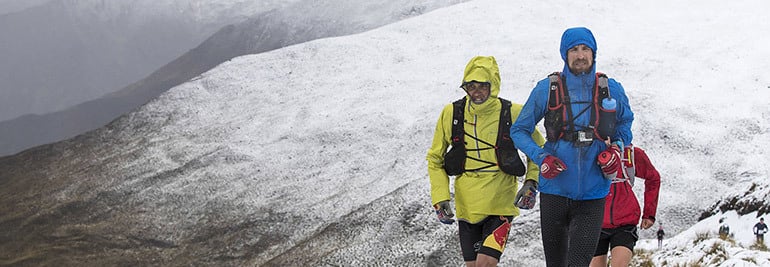
Meet the man you’ll want to train like for XTERRA 2017
Josiah Middaugh is the man most of you wish you could be – or at least, the man most of you wish you could race like. A professional triathlete for the last 14 years and the 2015 XTERRA World Champion, the Michigan-born ‘uphill runner’ is one of the toughest competitors on any XTERRA course. And the good news? Even if you can’t race like Josiah, this year, you’ll be able to train like him. Thanks to the new Suunto/XTERRA partnership, Middaugh will be passing on his training tips (and training tracks!) to you via articles on Suunto.com and his coach’s corner on XTERRAplanet.com. OK, ready to learn more about your new virtual coach? Read on.
I've always been a runner.
Yep – I was a cross country and indoor/outdoor track runner at Central Michigan, a D1 program, where I studied Exercise Science, which I then followed up with a Master’s in Kinesiology. After school I moved to Colorado, and it’s such an active community. I look out my window and see a bike riding by every few minutes. I got into triathlon almost immediately.
I like to run uphill.
And bike, too – I’m tall and skinny, but I still tend to do well on courses with big climbs, whether it’s on the bike or on foot. I think a lot of has to do with living altitude. My favorite XTERRA race location? I thrive on mountain courses – any kind of course that requires a big engine – especially with sustained climbing, that’s where I excel. Swimming is my weakness, but I make up for it on the uphill. Two of my favorite races are the Beaver Creek XTERRA, right in my backyard, and the National Championships in Ogden, Utah.
The toughest races are in Hawaii.
No question! Last year in Kapalua, Maui, we had a ton of mud on the course. It was the first time we encountered that at a World Championship. It wreaked havoc on bikes and drive trains, and it came down to whose bike held up on the mud. Down in Wailea, also on Maui, I had flat tires four out of ten years racing there. That made for interesting races! Carrying the bike, carrying wheels, tubes wrapped around my neck… but I’ve always finished the race!
Cross training is important...
I do more consistent strength training in the winter, and take advantage of the winter environment with snowshoeing, nordic skiing, and a bit of fat-biking. Not quite as much alpine skiing as I’d like to fit in.
...But not as important as regular training, done right.
I’ve been using Suunto products for a while, starting with the original multi-sport watches from nearly a decade ago. I’ve always taken a very scientific approach, and that turned me on to Suunto products. Mainly, I’m looking for objective ways to measure intensity and training load. It depends on the sport that I’m doing – pace if I’m running flat ground, heart rate if I’m running up Vail Mt with snowshoes, power on the road bike. But it’s all a guide – I’m not locked into any one metric. For 2017 I’m refining my approach – last year I had come off the championship win, and did a lot of racing all over the world, ‘saying yes’ to everything – I spread myself pretty thin. This year I’m competing less, training smarter and more efficiently, and will build in a little more spacing between my key competitions.
One guy I can’t shake is Braden Currie.
XTERRA is a race against mother nature – but I can’t seem to get away from Kiwi Braden Currie. I’ve been locked into many man-on-man battles with him over the years – including an epic photo finish last year. But we just had a fun race together on the same team for once at his event in New Zealand.
I’m ready for battle in 2017.
I’m feeling strong and healthy, ready to go for another year. Motivation is high! It’s still really early, but I think I’m setting myself up for another good year. First race of the year is in Costa Rica!
Ready to have your best year of racing yet? Then stay tuned for Josiah’s training tips on suunto.com – and make sure you check into the Middaugh Training Corner on XTERRAplanet.com.
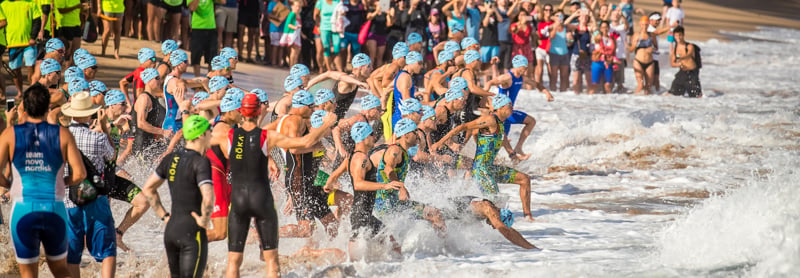
Suunto and XTERRA team up for the Pan American Tour
“No two courses in the world are alike,” says Tom Kiely, XTERRA CEO. “Each a different experience. All are in nature. Mother Nature is your toughest competitor.” The courses are often wet, muddy, and unquestionably challenging, with events upcoming in Alabama, Colorado, Utah, and of course, XTERRA’s home turf, Hawaii. Competitors are known for being tough as nails and extremely dedicated. The most impressed Tom has been? “Had to be the lady who completed the Maui trail run on crutches.”
For XTERRA, it was Suunto’s position as an authentic and credible adventure brand that made the partnership work. “There’s great synergy between our two companies,” continues Tom. “XTERRA athletes are all about discovering unknown territory, challenging themselves to be the best, and embracing the community. Suunto is too, and its world-class ‘XTERRA-proof’ GPS watches offers exceptional mapping, training, and community features.”
Those features mean the real ones benefitting from the partnership are athletes themselves. As part of the alliance, Josiah Middaugh, the 2016 XTERRA Pan American Tour Champion, who wears Suunto to train and race, will be sharing his workouts, tips, and more with bi-monthly Middaugh Coaching Corner, presented by Suunto columns this season. Bryson White, Suunto’s brand manager for the Americas, says: “We’re looking to standardize XTERRA course maps, provide training content specific to upcoming events, host demo days, and inspire the XTERRA Tribe to get out and Live More.” Suunto’s XTERRA course maps will make routes easier to read and follow, and provide more information to racers with layers of data that show altitude profiles, 3D terrain flyovers, and in some cases, historical user-data analysis of what it takes to succeed on a given course. What does that mean? XTERRA athletes will be able to re-create course-like training situations on their own in preparation for the race – and use watch data to assess how they’re performing in those conditions.
Suunto representatives will be on-site to educate and engage with the off-road community at XTERRA Oak Mountain (May 20-21, Pelham, Ala.), XTERRA Beaver Creek (July 15, Avon, Colo.), XTERRA Pan Am Championship (Sept 16-17, Ogden, Utah), XTERRA World Championship (Oct. 29, Maui, Hawaii), and XTERRA Trail Run World Championship (Dec. 3, Kualoa Ranch, Hawaii) as well as other select races throughout the year.
Learn more about XTERRA at xterraplanet.com
READ MORE
Meet the endurance super-couple aiming to do 100 triathlons in 100 days
How to run a sub-3h marathon
3 must-run routes in New York City
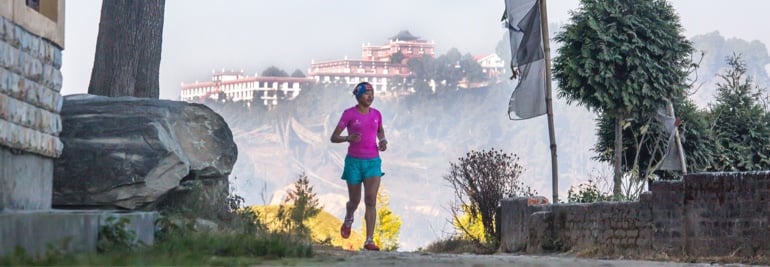
Nepalese trail runner Mira Rai has been voted the People’s Choice Adventurer of the Year 2017
Mira Rai is quickly making a big impact on the global trail running scene. Throughout her successes in major trail races, Mira has continued to keep a close connection to her home country of Nepal, where she is an inspiration to many. These attributes have brought her the remarkable award of National Geographic’s People’s Choice Adventurer of the Year 2017.
Mira Rai now joins the group of Suunto adventurers, like Kilian Jornet, Ueli Steck and Greg Hill, who have been nominated as the Adventurers of the year in the past.
We got in touch with Mira to hear the latest news.
Hey Mira, congratulations! You are now the 2017 People’s Choice Adventurer of the Year. How does it feel?
Wow! Amazing! I am very happy! I am very grateful for the support of everyone who supported.
What does this award mean to you?
It is very, very valuable for me. I had never thought I would win with top adventurers of the world in the competition. I am really thankful to everyone who has supported me and voted for me. I am very grateful to Trail Running Nepal, the director and everyone who worked behind the scenes to help me win this. This is not my win; this is an award for Nepal.
How are you going to celebrate this?
How will I celebrate? (laughs) I have not thought about celebrating! I want to thank everyone who has supported me. I think I will invite brothers and sisters for run/hike to one of the trails in Kathmandu at the weekend.
You organized a running race in your home-town last year. Why did you do it, how was it and are you organizing it again?
I wanted to introduce a trail race in my village, and let my village people experience what I do. I think organizing races and letting village kids have exposure to competitive running can inspire them to take athletics seriously if they are interested. I want to give the opportunity as I had had before. I also wanted to gain experience of organizing races.
My first race had 124 participants. Everyone from children to elders were excited to participate. Since it was raining that day, so many people who were interested couldn’t join. I am thankful to get support from various agencies. I was able to donate 90 pairs of goldstar shoes to the kids and they loved it. It was a successful race.
Yes, I want to organize it again. It is a very hard work. I will need more support.
Why do you think sport is important for women in Nepal?
Women living in the hills of Nepal are very strong. Many of them can carry heavy loads on technical trails without breaking a sweat. I think women should be encouraged to partake in sports in Nepal because like me, there can be many women who can make the country proud if given an opportunity.
What are your plans for this year? Some interesting projects or races coming up?
I want to focus on organizing trail races in Nepal this year with my Trail Running Nepal team. Also, I will be participating in races in China, France and Spain.
How have you recovered from the ACL injury you had last year?
My knee has not completely recovered. It might take another 3 or so months to fully recover. But I am working hard now doing physiotherapy, yoga, cross training to keep fit.
Images by Anuj Adhikary
For more info on running in Nepal, visit trailrunktm.com and trailrunningnepal.org
READ MORE
MEETING NEPALESE TRAIL RUNNER MIRA RAI
UELI STECK NOMINATED FOR ADVENTURER OF THE YEAR AWARD
KILIAN JORNET NAMED ADVENTURER OF THE YEAR

What’s the Ultra Trail world champ doing this year? More running
If you need a document notarized in Vilnius, Lithuania, you could ask Gediminas Grinius – provided you’re also working for NATO. That’s the world-champion ultra runner’s day job, cleverly snuck in between his 20k and 40k training runs. How did this father of two find time to train for and compete the world’s top ultra-marathons, claiming the world title in 2016? It wasn’t easy – but he managed. Read below to learn more.
Let’s start simple, Gediminas – why’d you win?
Easy – I don’t take defeat well. I wasn’t happy with my second place finish in 2015 – I was so close to first, but I made a mistake in the Grand Raid Reunion. I wanted to come back and do better. I also got a little bit of a nudge from Red Bull – but not in the normal way. I went for a little workout with them, but in the end, they weren’t keen on taking me on as an athlete. Those two things gave me something to prove.
How long have you been running?
I started in 2005 after my mission in Iraq. I didn’t do my first Ultra until 2009 tho. It’s been a very moderate progression over the years, but losing so closely last year really inspired me to train better and smarter.
Gediminas Grinius was crowned the champion of Ultra Trail World Tour in 2016
Tell us about 2016:
I kicked off with a 3rd in Hong Kong, and quickly followed with a 2nd in Gran Canaria, a 2nd in Lavaredo, and a second in UTMB. There were ten races on the tour, but only Sange Sherpa ran 6 (and never finished in the top 10) and two other runners did five. Four races with a podium finish was good enough to lock up the title!
What was your training strategy?
Quality over quantity. I tried to run from 100 to 150 km a week, depending on the block of training and periodization. In general, I am trying to run 5–6 times a week, between 20–40 km a week, including HIIT, intervals, back to backs, stuff like that. There are difference skills I am trying to develop. I needed more speed in UTMB so I am adding in more speed work, for example. But as I approach a race, I do more long runs and back-to-backs.
What’s a back-to-back?
I go for a long run late in the evening, then have a short recovery time – basically going to bed on an empty stomach, then waking up and running again. Generally I’ll try to do between 25 to 30km both of those days, and have a negative split – faster on the second day.
Who do you hate to see next to you on the start line?
I like the competitors in the field, and I like the challenge. No runners which I hate.
Gediminas training in Cappadocia, Turkey in December 2016.
Where do you like to line up?
I do well in the longer races. I think my strength is in my mind – up to 100km, your physical state is a big factor, after that, many things come in to play. Even in our ordinary life, we have a lot of stress factors. We can cope with them in our ordinary life, and when you do back-to-back runs, you give your mind understanding of how to deal with stress while running – this is how training of mind goes.
What’s the plan for 2017?
Honestly? I had a very intense last three years, and right now I feel a little exhausted. The plan for 2017 is to run a bunch of races I didn’t run before because of the point counting system – spend more time with family, and run the races. The first will be Tarawera Ultramarathon in New Zealand, Madeira Island Ultra Trail in Portugal, and then I want to do the Cappadocia Ultra Trail in Turkey.
And beyond?
I’ve got my eye on a FKT – running around Lake Tahoe in Northern California in 2018. Then in 2019, I’m going for a combined record time on the Ultra Trail Grand Slam.
Big goals. Any changes in your training plan?
Yeah. I think I’m getting a coach.
Images by Salomon Cappadocia Ultra-Trail
READ MORE
Four myths about ultra running that you need to know
How to transition from flat to off-road
How to run a sub-3h marathon
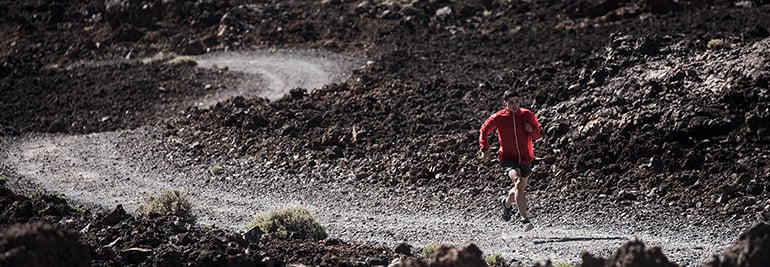
How to run a sub-3h marathon
Helsinki, Finland, based running coach Aki Nummela is no stranger to transforming weekend warriors to competitive runners. His company, Runner’s High, coaches hundreds of runners through clinics and private coaching every year.
“There are no quick wins in marathon running,” he says. “Many marathon runners only focus on mileage and actually train to be slow. And there’s no point in doing so. It is impossible to run a sub-3h marathon if you can’t keep up that pace for 10 kilometers. Versatility in training is very important for long distance runners."
Running a marathon in under three hours is a serious challenge: Some talented runners can make it with very little training. For many it is simply impossible. Suunto's training database actually reveals that 10% of 30–40-year-old men run a marathon in 3 hours, and the top 10% of women clock in about 15 minutes slower.
For reference, let’s take a look at what our numbers tell us. The top 10% of men 30–34 run a marathon in 3.00.08 and top 10% of men 35–39 run in 3.00.31. The top 10% of women 30–34 run a marathon in 3.16.34 and top 10% of women 35–39 run in 3.13.59. The times are based on over 25,000 marathons.
“A sub-3h marathon is a serious goal,” Nummela continues. “Most who set out to reach it are already established runners who know their level and have experience in running marathons. Random goals simply don’t work. You need to start with your current form and progress step by step within your own abilities. There are no short cuts.”
KNOW WHERE YOU’RE AT
Reaching the goal depends a lot on the past, too. If you already have trained well your progress will be slower than for someone who hasn’t put too much effort in structured training yet.
“When the base is strong, there’s no need to cover maximum amount of miles. Trying to add more miles in our busy lives may just wear us down before the week’s key workouts,” Nummela says.
“For some of my athletes it has come as a surprise that there may be less weekly training hours in their plan than before. But cutting mileage by half does not automatically drop performance.”
TEST YOUR SPEED
“Many marathoners are afraid of running fast” Nummela says. “But you need to start fast to have a fast time. Picking up the pace during the run is very difficult.”
A sub-3 hour marathon equals a pace of 4min17sec per kilometer, “but don’t get stuck running with the 4'20 pace in training,“ Nummela reminds you. “You need to build the speed capacity and once you’ve got this, you can add more marathon specific workouts in your plan. “
Nummela says that taking a good look at the times 3-hour marathoners have ran in shorter distances will give you a good idea where you are at. “If you can run 10 kilometers in 37 minutes, the pace needed to run a marathon in under three hours will feel easy.”
FIGURE OUT YOUR BEST WORKOUT
A classic workout for marathon is a progressively paced 30–35 km long run. “This workout should be finished off with your actual marathon pace,” Nummela says. “But keep in mind that this is a hard one, like a race, and proper time for recovery is needed.”
He also suggests running half marathons. They are not only great workouts – they’ll also teach you a thing or two about racing.
In addition to long runs, Nummela always makes his athletes run shorter intervals, too. Something like 6 times 1000 meters (at 5.000–10.000m race pace) and 4 times 2–3 kilometers (at 10.000m–half marathon pace) are great practice for fast, efficient marathon running.
At the end, he always stresses changing it up: “Versatility is the key. After a long hard one I suggest running something different, like the 6x1km mentioned earlier, so that the stimulus is different every time. Otherwise your progress will slow down.”
TRUST YOUR INSTINCTS
Coach Nummela thinks that both pace and heart rate are valuable info to runners. In training HR will prevent you from going too hard.
“But feeling is also very important. One should not look at the data on the sport watch too much either. You will need to learn to listen to your body and its signals, too.
ADJUST ON THE FLY
Goals are important – but you should be prepared to adjust your goals if needed.
“Running a sub-3h marathon depends a lot on the day’s form and conditions as well. If for example the race day is extremely hot, it is only wise to back off a bit. It may be smarter to run a 3:10 marathon than to end up on a drip. Be agile in your running and your thinking and you will eventually reach your goal.”
“And once you have trained right, and are in great form, all you have to do is go out and do it. Then reaching your goal is easy.”








